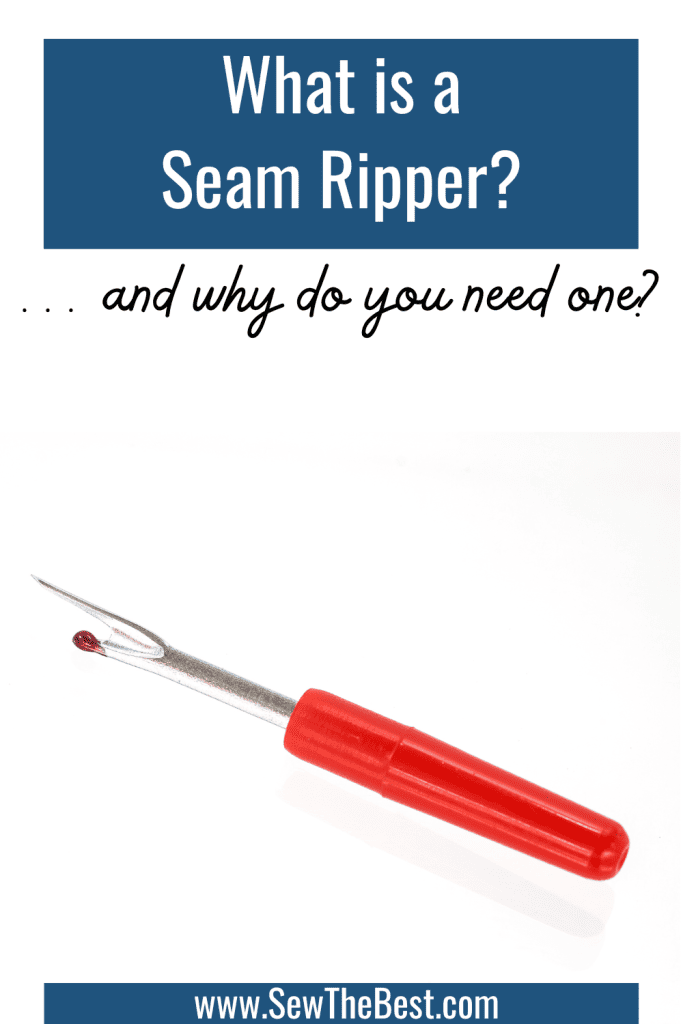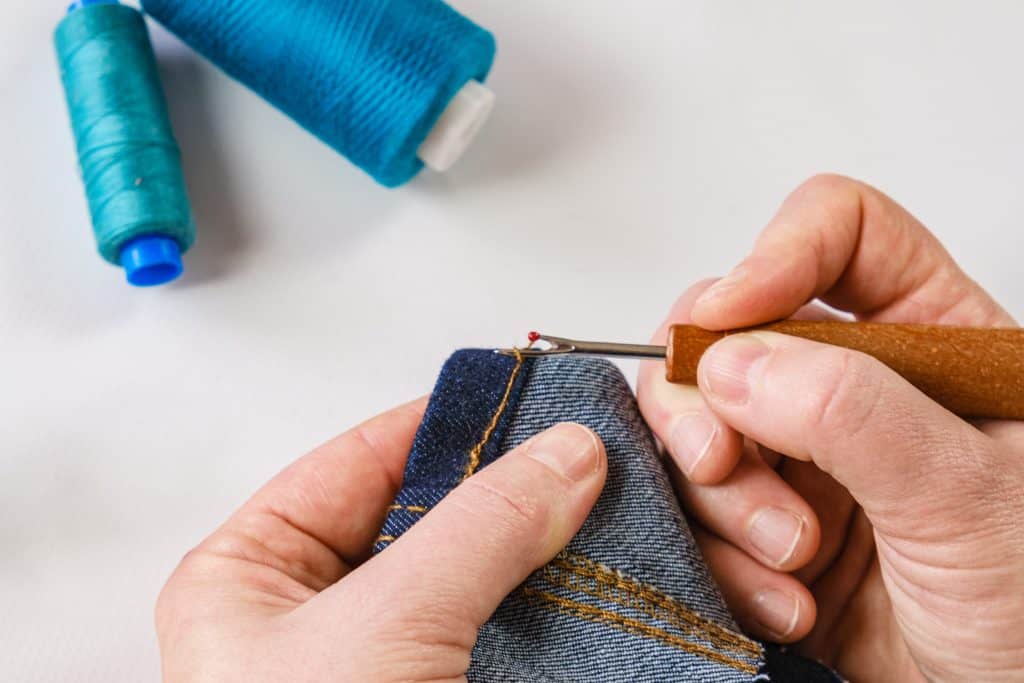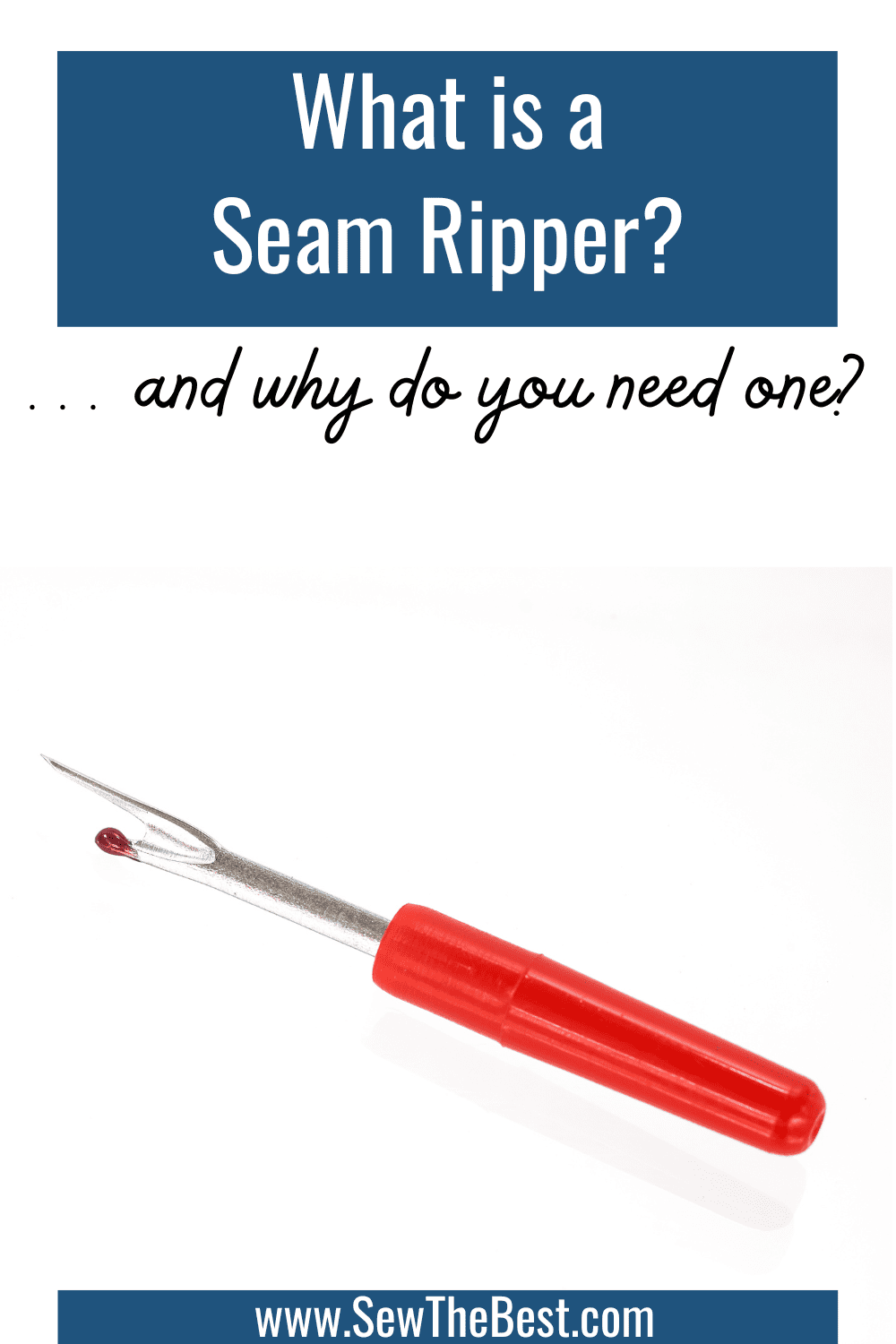In the exciting world of sewing, a seam ripper is a small yet indispensable tool that holds a mighty power. Whether you are an experienced seamstress or just beginning to explore the art of stitching, understanding what a seam ripper is and how to use it can make all the difference in your sewing endeavors. Seam rippers are like trusty sidekicks to sewing enthusiasts, coming to the rescue whenever you accidentally sew a sleeve in backwards or make a similar stitching mistake. In this blog post, we’ll delve into the world of seam rippers, exploring their anatomy, discovering their essential role in sewing, and providing you with useful tips to make the most of this nifty tool. So, let’s unravel the secrets of the seam ripper and learn how it can be your greatest ally in the world of needle and thread.

If you’re in a hurry (or just curious!) –
✅ Check deals on our favorite seam ripper!
asin_id is required.Pictured here – Singer Grip N Rip Seam Ripper
What is a Seam Ripper?
A seam ripper consists of four main parts – a handle, shaft, blade, and cap.
The handle is the part of the seam ripper that provides a comfortable grip and control during its use. Typically made of plastic or metal, the handle is designed to fit ergonomically in your hand, making it easy to hold for extended periods without causing discomfort. Some seam rippers feature textured or rubberized grips to prevent slipping while working on various fabrics. A well-designed handle allows you to easily and securely grip the seam ripper.
Connected to the handle, the shaft of a seam ripper is a slender, elongated component that holds the blade securely in place. The length of the shaft may vary, with some seam rippers having shorter shafts for increased maneuverability and others with longer shafts for reaching into deeper seams.
The blade is the most important part of the seam ripper, responsible for its primary purpose – removing stitches. Seam ripper blades are usually made of stainless steel, ensuring durability and sharpness. They come in different shapes and sizes to suit various sewing needs. The most common blade shape is a small pointy U shape with a blade in the middle of the U. It is designed to slide under stitches and cut them without damaging the fabric. The sharpness and precision of the blade are vital to ensure clean and efficient seam ripping without leaving behind unsightly snags or tears in your fabric.
The cap is a protective covering that fits over the blade when the seam ripper is not in use. Its primary function is to keep the blade safe and prevent accidental injuries when the seam ripper is stored or carried. Many seam rippers have caps that can be securely attached to the handle while using the tool, ensuring you won’t misplace it during your sewing projects. Additionally, the cap also guards the sharp blade from dulling or getting damaged when not in use, prolonging the lifespan of the seam ripper
Understanding the different parts of a seam ripper is crucial for getting the most out of this essential sewing tool. Each component plays a vital role in the seam ripping process, offering comfort, precision, and safety to ensure your sewing projects remain flawless and enjoyable.
How to use a Seam Ripper

Using a seam ripper effectively starts with preparing the fabric, ensuring the fabric is smooth and the stitches are visible. Hold the seam ripper firmly in your dominant hand, position the blade’s tip under the stitch, and lift upwards to slide the thread into the seam ripper’s U shape and cut the thread. Work methodically, removing one stitch at a time to avoid fabric snags. Be cautious, keeping the blade away from fingers and body, using gentle motions, and avoiding excessive force. Believe me, you don’t want to stab yourself! With patience and care, you can achieve clean and precise seam ripping results, making the seam ripper an indispensable tool in your sewing kit.
FAQ
Can a Seam Ripper Damage Fabric?
No, when used correctly, a seam ripper should not damage fabric. Seam rippers are designed with a sharp, pointed blade that slides underneath stitches, cutting them without harming the fabric itself. However, it’s essential to use the seam ripper with caution, especially on delicate or lightweight fabrics, to avoid accidentally snagging or tearing the material. Taking your time and using gentle motions will help ensure that the seam ripping process is precise and fabric-friendly.
How Long Do Seam Rippers Last?
A well-maintained, high-quality seam ripper can last for several years, providing reliable performance throughout. To extend its lifespan, it’s essential to clean the seam ripper regularly, store it in a safe place, and handle it with care during use. If you notice signs of dullness or blade wear, consider investing in a new seam ripper for optimal results.
What can I use instead of a seam ripper?
If you find yourself without a seam ripper, several alternative tools can come to the rescue. Small embroidery scissors, nail clippers, or even the point of a craft knife can be used to remove stitches, although with varying levels of precision. However, it’s essential to be extra cautious when using these alternatives, as they may pose a higher risk of fabric damage compared to a seam ripper’s specifically designed blade.
Can I use scissors as a seam ripper?
While scissors can be used as an alternative to a seam ripper in a pinch, they are not the most ideal tool for the task. Seam rippers have a sharp, fine blade that easily slips under stitches without damaging the fabric, whereas scissors’ wide blades may cause unintended cuts and fabric snags. Additionally, seam rippers offer better precision, making the seam ripping process more efficient. If you frequently engage in sewing projects, investing in a proper seam ripper is a wise choice to ensure accurate and safe seam removal without compromising your fabric.
Summary
The seam ripper proves itself as an indispensable tool in the world of sewing, undoing stitching errors and allowing for effortless alterations. Its well-designed anatomy, featuring a handle for control, a shaft for precision, a sharp blade for accurate cutting, and a protective cap, empowers users to handle it with ease. When used carefully, a seam ripper won’t damage fabric and can last for years with proper maintenance. Although alternatives exist, nothing matches the seam ripper’s fabric-friendly nature and precision. So, embrace this reliable tool in your sewing adventures, confidently correcting stitches and creating flawless projects. With the seam ripper as your ally, fearlessly explore the art of sewing and achieve sewing perfection. Happy sewing!
Related Posts:
- Looking for more beginner tools? Check out the Best Basic Sewing Tools for Beginner Sewers
- Wondering what other cutting tools there are? Check out our post about rotary cutters!
